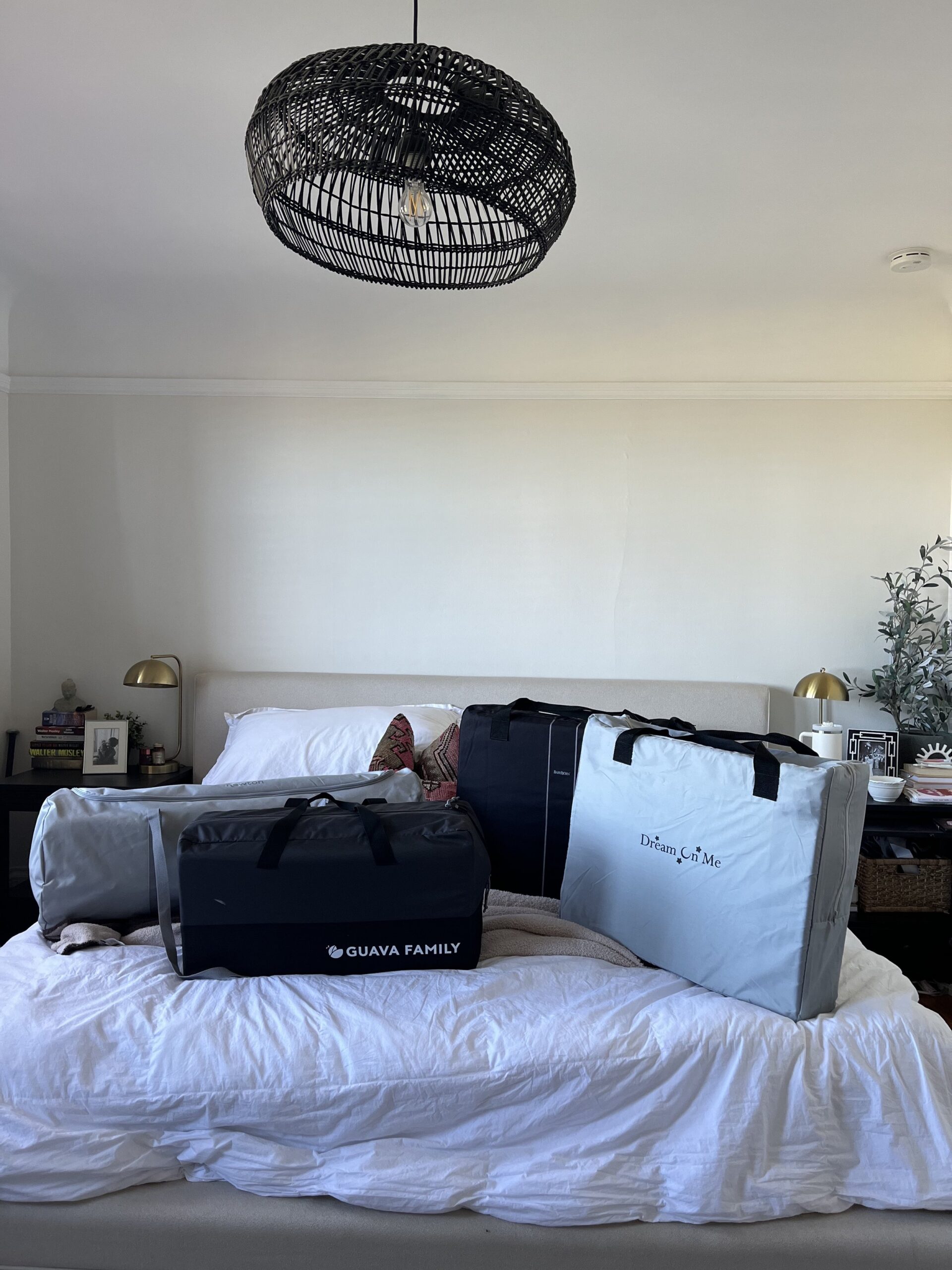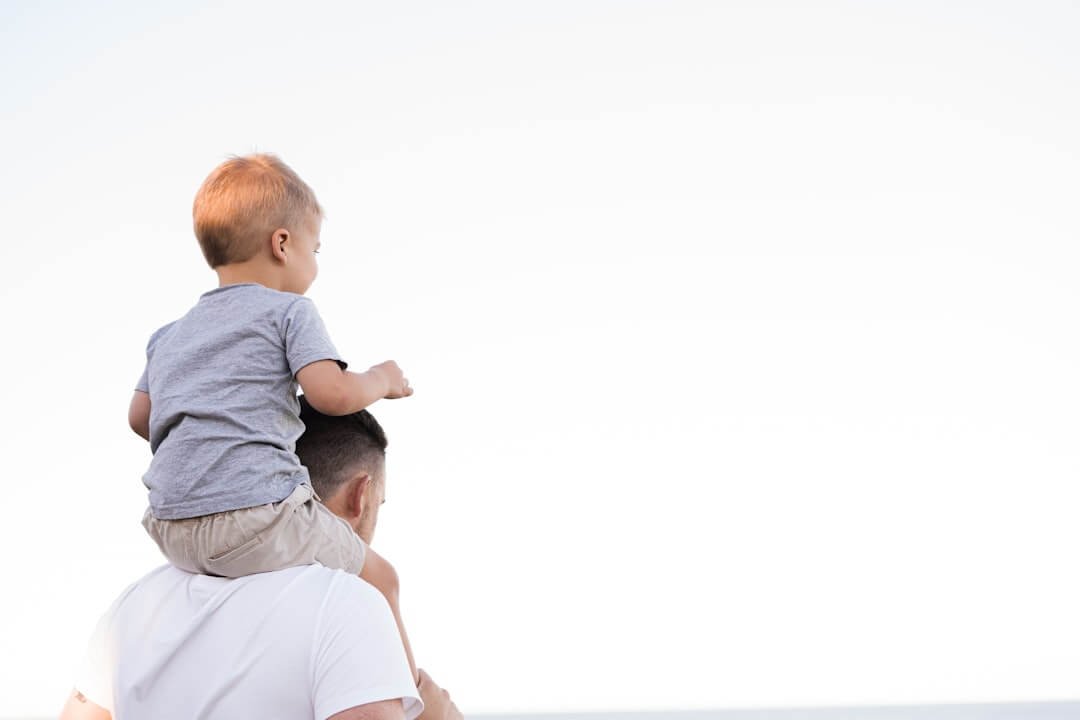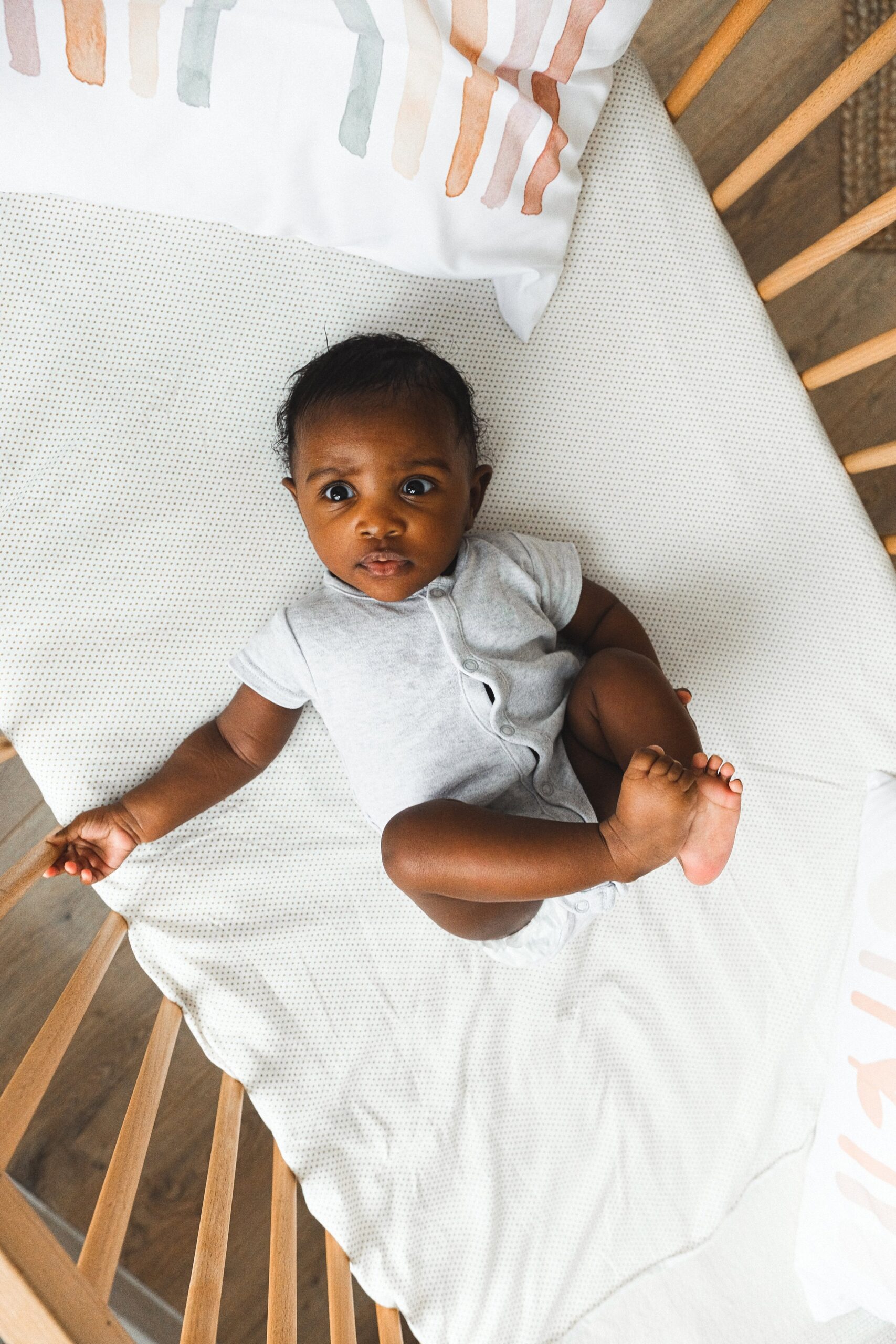I'm Rachael
Mom of 3 & Baby Sleep Expert with Big Sis Energy
& I’VE DONE ALL THE RESEARCH FOR YOU ALREADY.
Better sleep for the entire family
BROWSE COURSES
hey!
introducing a bottle and dealing with bottle refusal
in this post:
Even if you plan on breastfeeding, you may decide that giving your baby bottles from time to time will give you some freedom. Maybe you are planning on returning to work and you’ll be pumping or you just want to be able to leave your breastfed baby with another person from time to time. There are lots of things you can do to support your baby in accepting a bottle. Let’s take a look.

when to introduce a bottle
Most lactation consultants recommend waiting until breastfeeding is well established. This means there are no issues with your milk supply or baby’s weight gain, and you don’t have pain or any other problems while nursing. For many, supply isn’t regulated until 4-6 weeks, and pumping too much can interfere with that. However, if there are no concerns and you need to get your baby comfortable with bottles, you don’t have to wait that long to practice!
what type of bottle is best?
In general you want the bottle to mimic the breast. Look for a sloped “V” shape nipple rather than a long nipple with a flat base. It’s also important that the nipples themselves are slow flow. There’s really no need to ever go up in nipple speed- most IBCLC’s agree that slow is best and most breast-like, plus avoids drinking too quickly which can cause tummy upset. There are three great bottles that fit this description:
Don’t buy a whole pack of one type prematurely, though! Every baby has different preferences for bottle style and you don’t want to be stuck with a ton of bottles they won’t take. Try borrowing from a friend or getting just one of a couple of different types until you find one that your baby likes.
how & when to pump for the bottle
There are a few options for pumping or collecting milk for a bottle. You can use a milk collector (like the Haakaa Ladybug or Elvie Catch) throughout the day to get a couple of ounces to give your baby in a bottle. You may not get much in milk collectors though, and that’s ok! You can try to collect in small increments and add them up throughout the day to equal 2-3 ounces (keep at room temp up to 4 hours or refrigerate each “batch” then combine at the end of the day- will last 4 days in fridge) for a bottle, or use a pump instead. In this case you’ll use a pump (manual or electric are most effective) and pump your breasts after a feeding when they’re still a bit full, or pump on one side while your baby nurses on the other.
If you are pumping to build a freezer “stash” you can pump a few ounces this way and immediately bag, label and freeze it for later. This milk is kind of “extra” so it likely won’t have an impact on your supply or the rest of your baby’s feeds that day. When you do go out or return to work, though, you’ll want to remove milk regularly, as often as baby feeds. So if they typically nurse every 3 hours, you’ll want to make sure you pump when they would be feeding while you’re away. This helps make sure your supply stays regulated.
how much milk to give baby
Generally speaking, a breastfed baby will take 2-3 ounces per feeding. As they grow you may add more in 0.5- 1 ounce increments if they still seem hungry when finishing the 2-3 ounce bottle.
how often should you try a bottle?
In the initial introduction phase, you’ll want to practice at least once per day. If you’re returning to work, try to plan for beginning practicing with the bottle at least 3-4 weeks ahead of time. If you won’t be leaving baby full time but still want to maintain practice with bottle feeding for convenience, aim for a bottle per day at least a few times per week.
how to bottle feed a breastfed baby
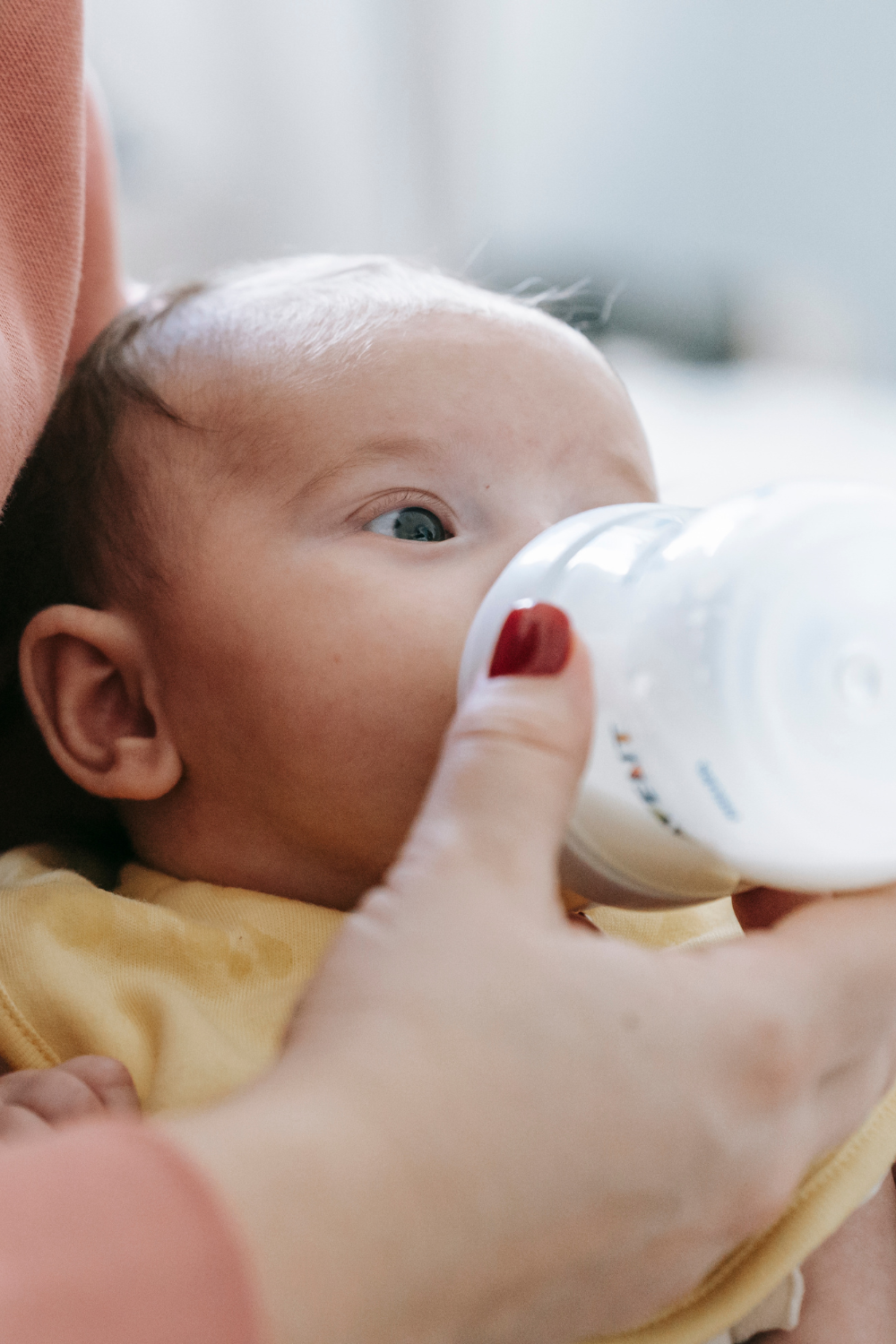
One thing that you definitely want to practice, or teach your partner/ other caregiver how to do, is a paced bottle feeding. Paced bottle feeding essentially just gives baby more control during the feeding process, just like when they’re nursing. This feeding method allows for the milk flow to be slowed down and for the baby to pause and take breaks when needed. If you think about images you typically see of babies being bottle fed- they’re likely in a “cradle” position with the bottom of the bottle facing towards the sky. This is actually not an ideal position! To do a paced bottle feed:
-
be sure bottle is no more than 2-3 ounces full to start, with a slow flow nipple
-
hold baby in your lap in a semi upright position, supporting neck and head as needed
-
tickle baby’s bottom lip with the nipple of the bottle
-
if baby opens their mouth, insert the nipple being sure to get a deep latch
-
hold bottle horizontal to the floor- NOT tipped up
-
let baby start to suck (even if no milk is coming yet- this is just like breastfeeding, it takes a minute for milk to flow)
-
then tip the bottle just enough to let some milk into the nipple
-
let baby suck for a little bit, being sure they are getting continuous swallows
-
after 30 seconds or so, give them a break by tipping the bottle back down
-
after taking a few seconds for a break, repeat the process
-
burp as necessary (during breaks or at the end)
-
when baby is showing full signs (no longer sucking actively, turning away, falling asleep, open palm vs. fists etc), you can stop the feeding even if there is milk left in the bottle. Discard leftover milk after 2 hours if unused. More on proper storage of breastmilk here.
You also want to consider timing. Timing of when the bottle is offered can make a huge difference! For some babies, feeding to sleep is a strong association for them and can be very calming. You may try offering the bottle when they’re ready to go to sleep. For other groggy eaters, trying the bottle when they wake up from a nap might be the best way to go. For babies who are very attached to nursing though, this could backfire. In this case you’ll want to try offering the bottle during non-sleep times. Think of them more like “snacks” or bonus feeds. They can have a bottle 20 minutes or so AFTER you’ve nursed, so you know they’re actually not starving. This will help because if they are really hungry and not getting the hang of the bottle immediately, they’ll get very frustrated and upset. You want the feeding experience to be as calm and relaxed as possible. Just like other aspects of bottle feeding, the timing is trial and error- every baby has different preferences!
Lastly, WHO offers the bottle can make a big difference. If your mom, mother-in-law, babysitter or partner will be the one offering bottles while you’re away, have them be the ones to practice when possible! It also may work best if you are out of sight or even out of the house when this happens. Take yourself on a walk around the block with a great podcast to listen to and let them figure it out. Baby will often be more accepting of the bottle when you’re not an option.

what if baby won’t take the bottle?
There are a lot of babies who don’t know what to do with a bottle right away. There are some babies who flat out refuse it no matter what. Every baby is different, so always consult with an IBCLC if you have concerns about your baby’s feeding (yes, they help with bottle feeding too!). IBCLC visits can often be covered through insurance, so it doesn’t hurt to check in with one!
My friend Aubri at @lutz.lactation on Instagram taught me this trick I always remembered. For bottle feeding breastfed babies you can take one of two routes:
Make it LESS like Breastfeeding
-
Sit in a different spot than nursing usually happens
-
Try the milk cold/ room temp instead of warmed
-
Try a straw cup, sippy cup or open cup if the bottle isn’t happening
-
Face baby outward on your lap or in a new position
-
Try feeding in a carrier, high chair, stroller, etc.
Make it MORE like Breastfeeding
-
Make sure milk is fresh/ warm enough
-
Face baby towards you and snuggle them close, skin to skin if possible
-
Mimic positioning used for breastfeeding (just be sure they are semi-upright)
-
Sit in the same spot that nursing typically happens
-
Use a shirt worn by mom to give baby her scent
There are some more things to consider if your baby is having trouble with getting the hang of bottle feeding.
-
If you just need baby to eat while you’re away and don’t care able the bottle per se, you have other options! You might consider using a straw cup or open cup if baby isn’t into the bottle feeding with other caregivers. Small open cups and straw cups can be introduced at about 6 months. Here’s a great guide for teaching your baby how to drink from different types of cups. For younger babies, milk can be offered from a spoon, small medicine cup, or with a syringe.
-
Play with the temperature. Some babies refuse warmed milk and prefer milk in a bottle to be chilled! Others refuse milk that has been previously frozen. This can take some trial and error.
-
You can also try out a few different bottles to see what shape your baby likes best. Remember that typically sloped nipples (look like a V shape) are best for breastfed babies.
-
If you’re struggling and not seeing improvement, I really recommend getting in touch with an IBCLC. Sometimes if a baby has an undiagnosed tie or an oral motor issue but they’ve compensated at the breast, a bottle can be very hard for them to manage physically. There also might be issues such as trapped air/ gas happening with bottles that wasn’t obvious at the breast. If baby is getting extremely agitated, frustrated, refusing to eat no matter what you try (breast or bottle) this could be a feeding aversion which you want to get support for right away. Check out my other “red flag” info if you are concerned with your baby’s feeding or sleep.
-
If you want more support, check out our Newborn Masterclass. It’s the most comprehensive newborn course around and will help you be totally set all the way through the fourth trimester and beyond. It includes mental health information, creating routines and sleep associations, feeding + safe sleep options (cosleeping + bed sharing included), and so much more!
Featured
Choosing the right time to leave your baby is a super personal choice. Some babies and moms feel comfortable at a much earlier stage than others and finding the right time for you is important. These are my tips for prepping to leave your baby overnight.
Travel crib and play yards can provide a safe and comfy space for your little one to hang out or sleep. But which travel crib is best? In this blog post, Rachael reviews 6 different popular play yards and compares each one based on different criteria…
Was this helpful? Save it for later!
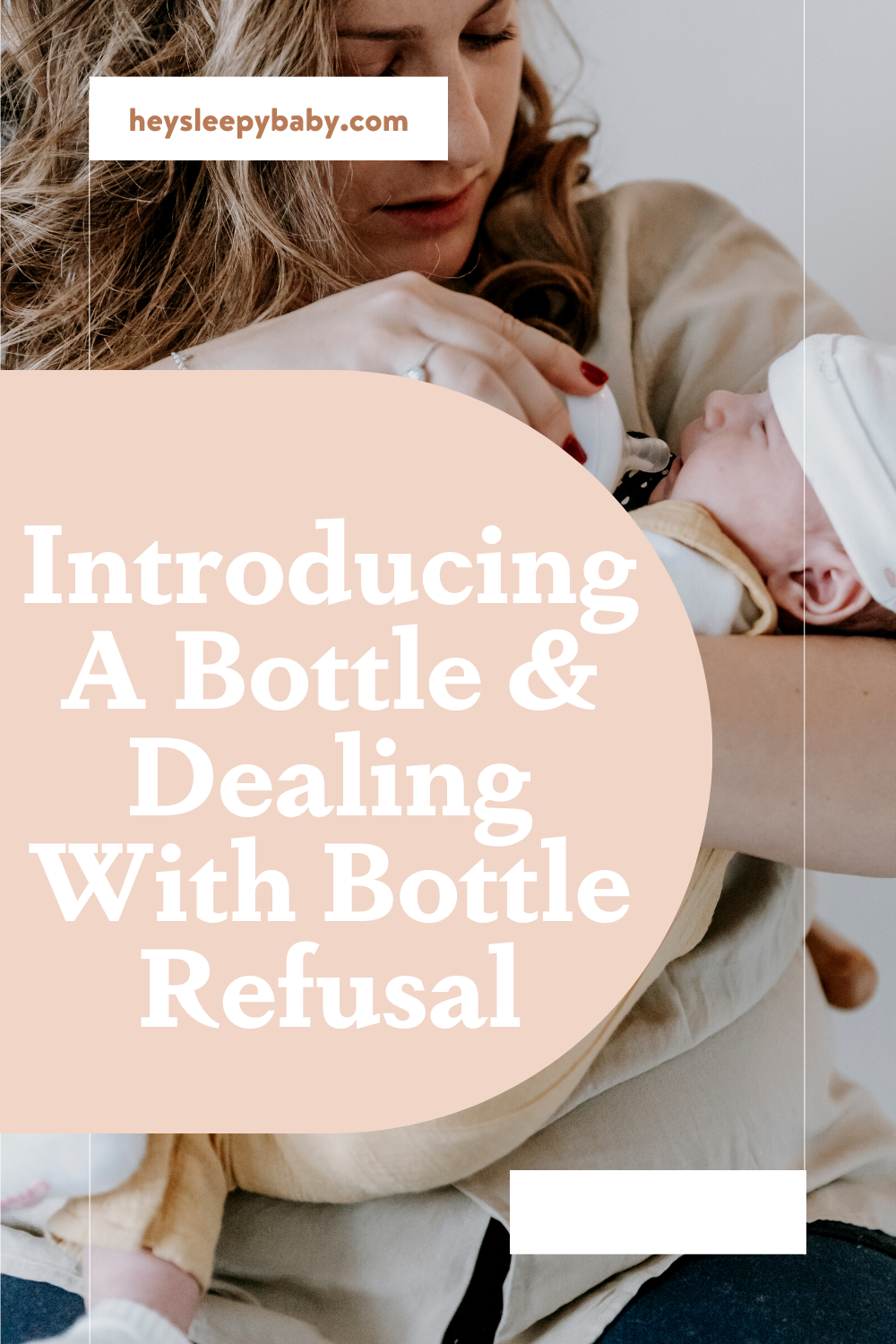
binge reads
We think you'll love these
You deserve to the
baby stage, not just "survive it."
And you DON'T have to sacrifice your values, ignore your instincts, or force yourself to follow a method you don't align with just to get your baby back to sleep.
I’m here to help you create a restful, sustainable sleep environment that honors both your baby’s needs AND your own (without the stress OR the guilt!) because, no, you don’t have to choose between the two.
enjoy!
BABY SLEEP COURSES →
BABY SLEEP CONSULTS →
Wish you could help your baby sleep better without resorting to sleep training? Download my FREE guide to a good night’s sleep and learn 8 simple, science-backed tips for supporting your child’s needs.
Traditional sleep training methods don’t have to be your solution to better sleep.
SLEEP TRAINING ISN’T THE ONLY WAY TO GET GOOD SLEEP
Hey, I'm Rachael and Hey, Sleepy Baby is for parents who want to get their nights back, without sleep training their babies.
NO ONE TOLD US POD
explorING the untold truths of parenting





